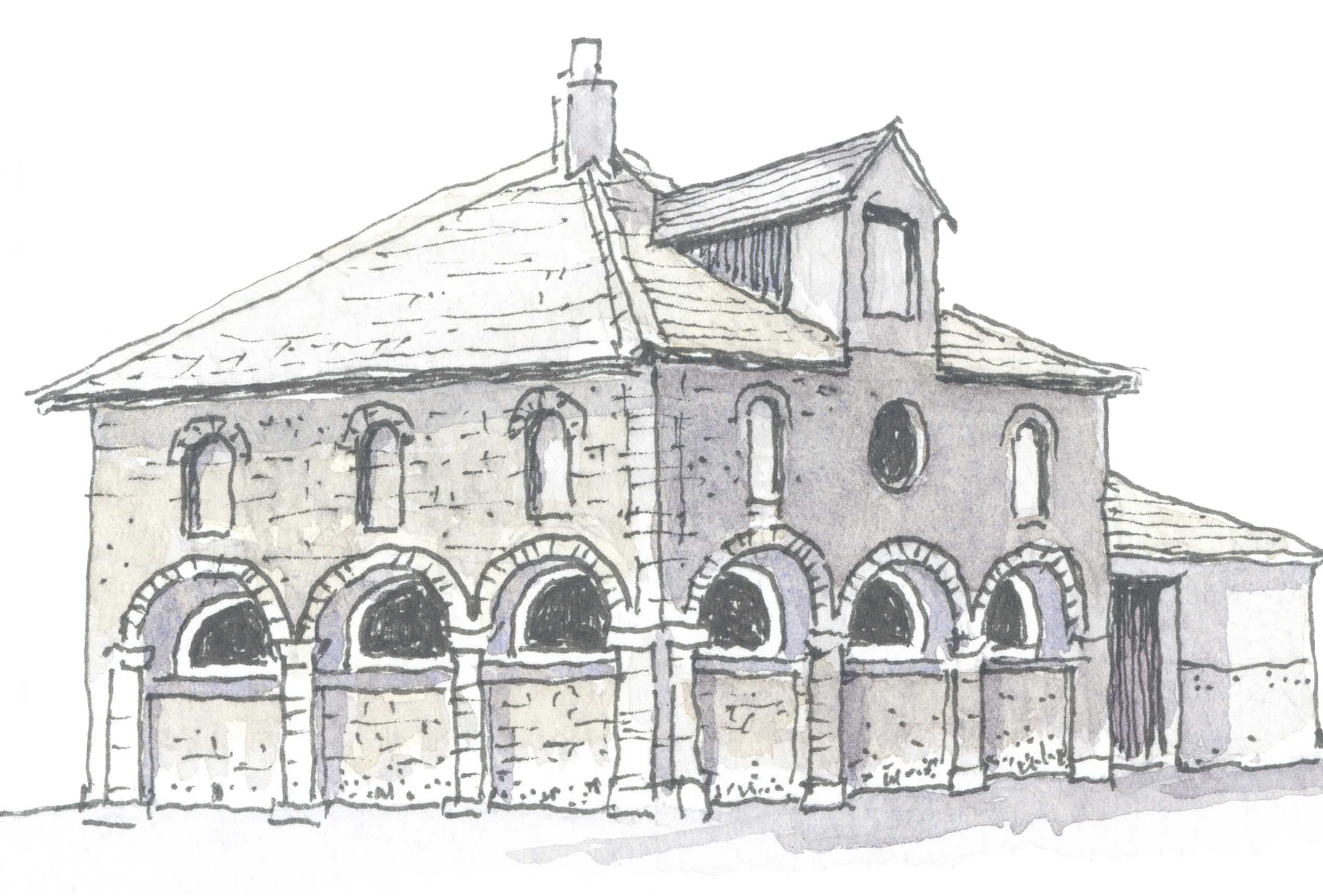When Shap Local History Society gathered in the Memorial Hall they were welcomed by Chairman Jean Jackson, who was the speaker in the second of a series of four talks exploring the evolution of the village. Mrs Jackson said that Shap was a place where most historic events happened all around but bypassed the village.
She recalled how she had been quite envious of Shap pupils during her time at Penrith Grammar School, because they would summoned from classes to go to the bus station during bad winter weather so they could go home. She also recalled once travelling with her father Richard Thompson to the aid of one of their cattle wagons that was stuck on Shap Fell in snow. Mrs Jackson eventually came to live in Shap during the mid 1960s.
Mrs Jackson’s illustrated talk was entitled ‘From Romans to the Restoration’, concentrating on a long period of history including the dark age and mediaeval periods.
The nearest Roman fort would have been the one at Low Borrow Bridge near Tebay, and she reminded the audience that during the Roman period, Shap would have been in a militarised zone, but there would have been a lot of opportunity for trading with the Roman army and the network of roads would have aided movement across the area. There are Roman roads to the east and west of Shap, one linking Low Borrow Bridge with Brougham and the second, known as High Street, linking the forts at Ambleside and Brougham.
Mrs Jackson then detailed an interesting hoard found near the farm known as Brinns to the north of the village. This had been discovered during road works in the 19th century, and consisted of 19 gold (aurei) and 580 silver coins from the Vespasian and Domitian periods with an estimated hoarding-date between AD98 and 120. It is likely that the hoard was buried when there was threat of rebellion in 120 AD. Unfortunately, no-one knows the whereabouts of the hoard today.
After the Romans departed from Britain in 410 AD, the Celts re-established themselves, and it is from this dark age period that we find the legends of the great rulers Coel Hen, his descendent Urien of Rheged, and his son Owain reputed to the buried in the Giant’s Grave in Penrith.
During the 8th century the first church was established in Shap, this would have been a timber construction. Evidence of the village development was found in 2000 when an archaeological dig during development for new housing revealed the site of a Dark Age house dating from the 7th or 8th century in the middle of the village.
The Norse settled in the area around 930 AD, and they left a great legacy in their place names and dialect also some stone carvings. In Whelter Combe near Haweswater there is evidence of the Scandinavian practice of summer pasturing, with the remains of sheilings dating from this period.
The next changes came with the Normans, and the establishment of local families such as Lowther, Dolphin and Gospatrick. The church was rebuilt in stone around 1150, predating the abbey. The Premonstratensian order founded an abbey on land granted by Thomas Gospatrick in 1199. The abbey received gifts from local landowners in the form of lands, they also had tenants in the village. The wool trade made Shap Abbey wealthy. There were common fields for agriculture.
Shap suffered during the Anglo Scottish War and in 1322, Black Douglas led a raid as far south as Shap razing it to the ground.
The dissolution of the abbey finally came in January 1540, Mrs Jackson described the pensions awarded to the remaining Canons for their lifetime, and churches that had received bells at that time, only two are known to still exist in their original form, others having been lost or recast. In 1545 the abbey lands were sold by the Crown to Lord Thomas Wharton, and that family became the lords of the manor. When the Whartons fell on bad times in 1729, the lands were surrendered and purchased by the Lowthers.
The Local History Society archives show that the large fields all had names; and there are records of the Shap Paines; this was a system when people were ordered to carry out repairs ‘on the paine (fine) of ‘ if this was not done.
The Market Charter was granted by Philip, Lord Wharton in 1687, and the Market Cross erected in the form of arched arcades covered by a roof, this building is now owned by the History Society; in the following year the Moot Hall was built, this stood on the site now occupied by Shap Primary School.
Mrs Jackson showed a map of the Greyhound estate dating from 1670 this was very interesting. There were statesman farmers in Rosgill and Sleddale where there were halls, and wills give an insight into the property they owned.
In 1651, King Charles the Second rested his army at Black Dub, just on the eastern boundary of Shap on his way south following the battle of Dunbar.
In 1745, another of the Stuart dynasty, Bonnie Prince Charlie stayed in Shap on his retreat back north, this was recorded in his household book, when he complained about the price the landlady charged.
Mrs Jackson was thanked by Liz Amos, and there was opportunity for questions whilst refreshments were served.
